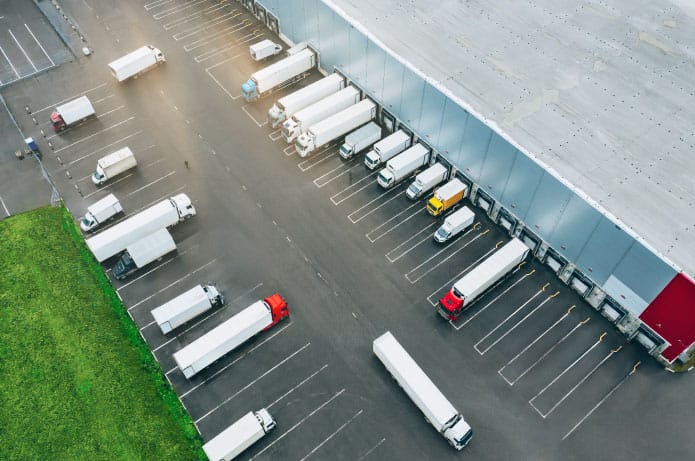On January 28th, the International Data Protection Day is celebrated, a date that emphasizes the importance of ensuring security and privacy in the digital world. This is a topic that becomes even more relevant with the growth of PIX, Open Finance, and the use of financial apps like PicPay, Nubank, and Mercado Pago, which are transforming the way we interact with digital services.
PIX, for example, is already the most widespread payment method among Brazilians. The instant payment service, created by the Central Bank (BC), is used by 76.4% of the population. Next, come the debit card (69.1%) and cash (68.9%). The data is in thesearch“The Brazilian and his Relationship with Money”, published by the BC.
Open Finance, in turn, reached 37 million consents in October 2024, with 99% from individuals, representing a 35% increase compared to the 27 million recorded in the same period of 2023, according to the study "Evolution of Open Finance in Brazil," conducted by the international consultancy BIP.
These advances are a reflection of consumers' growing confidence in sharing information in a structured and secure manner. However, despite the benefits of data sharing, there are still questions about how to do it securely in the financial market, maintaining the balance between innovation and privacy.
“It is essential that both companies and consumers understand the importance of protecting data such as name, address, financial history and consumption habits, ensuring compliance with the General Data Protection Law (LGPD)”, mentions the specialist and CEO of Lina Open X, Alan Mareines.
LGPD: 58% das empresas aumentaram seus investimentos em segurança
The LGPD was created to regulate the use and protection of personal data, promoting privacy and security. However, asurveyPwC revealed that 58% of companies increased their investments in information security after the legislation was implemented. This demonstrates that, although the compliance process is underway, there is a growing awareness of the importance of protecting personal data.
The adaptation of Brazilian companies to the Law has advanced, but still faces significant challenges. According to astudyAccording to Logicalis, only 36% of organizations in Brazil claim to be fully compliant with LGPD, while 43% are in the process of implementing measures to comply with the code. Notably, 6% of companies have not yet initiated specific compliance actions.
“Adapting to the LGPD brings several challenges for companies, such as the need to review internal policies, train employees and implement new data protection technologies. These measures are essential to prevent information leaks and ensure consumer trust,” analyzes Lina Open X CEO, Mareines.
For Mareines, consumers play a vital role in protecting their data. "It is essential to be aware of your rights, such as the right to access, correct, and delete your data, as well as to adopt good practices when sharing personal information, such as verifying the legitimacy of companies and using secure channels," he explains.
How to share data securely?
To share information securely, it is essential to adopt best practices. First of all, make sure that the websites and apps you use are trustworthy and employ encryption technologies. You can check this by looking to see if the address begins with "https" and if there is a padlock icon in the navigation bar.
Additionally, carefully read the privacy policies to understand how your data will be collected, stored, and used. Prioritize services that are transparent and clear regarding these practices.
Adjust privacy settings on platforms and devices to control which information will be shared and with whom. Whenever possible, enable two-factor authentication (2FA) to add an extra layer of protection to your accounts. It is also important to create unique and strong passwords for each account and, if necessary, use a password manager to organize them securely.
Keep your devices and applications updated with the latest versions of software and security patches. Avoid using public Wi-Fi networks to transmit personal data; opt for private connections or, if necessary, use a virtual private network (VPN) to ensure a secure connection. Regularly review the permissions granted to apps on your device, authorizing only access to the information necessary for their operation.
Be cautious with emails, messages, and links that seem suspicious or request personal information. Always verify the authenticity of the sender before sharing any data.
Make frequent backups of important files to ensure you can recover them in case of loss or cyber attack. In certain situations, consider using solutions such as digital wallets or authentication tokens to protect sensitive data.
Finally, stay updated on modern security and privacy practices by monitoring new threats and vulnerabilities. "By following these guidelines, it is possible to share information more securely, protecting privacy and significantly reducing the risks of exposure or misuse of personal data," emphasizes Alan.
10 Benefits of Sharing Your Data Securely
Sharing personal information can offer a range of benefits for both consumers and companies. According to asearchfrom Mastercard, while 60% of executives believe that consumers recognize advantages in sharing their data to obtain benefits, only 44% of users actually see value in it.
For companies, data provides valuable insights into market trends and areas for improvement, contributing to the development of more innovative products and services. Consumers can benefit in various ways by choosing to share their information securely, such as:
1) Personalized services:Shared data allows companies to tailor products and services to individual consumer preferences. A practical example is streaming platforms that suggest content based on the user's viewing history.
2) Discounts and rewards:Many companies offer perks such as coupons, exclusive promotions or loyalty programs in exchange for customer information, encouraging their loyalty.
3) Improved user experience:Data helps companies create more intuitive interfaces and features that meet user expectations, improving the customer journey.
4) Exclusive access:Some features or benefits, such as early access to exclusive releases and events, are only available to those who choose to share their information.
5) Most relevant recommendations:Based on the data, companies can suggest products and services that truly meet consumers' needs, saving time and improving the experience.
6) Improvement of products and services:Feedback and usage data help companies identify flaws and areas for improvement, resulting in more efficient solutions tailored to user demands.
7) Enhanced security:Banks and digital services can use behavioral data to quickly detect fraud, as well as offer more secure and practical authentication processes.
8) Personalized support:Data sharing allows companies to offer more agile and effective technical support, tailoring solutions to the specific needs of each customer.
9) Advances in health and well-being:In the medical field, shared data enables more accurate diagnoses, personalized treatments and continuous monitoring, improving patients' quality of life.
10) Encouraging innovation:Ethically collected data contributes to advances in technology and artificial intelligence, generating benefits that positively impact society as a whole.
“Understanding the importance of data sharing and adopting secure practices can bring countless benefits, both for consumers and companies, promoting a safer and more efficient digital environment”, concludes Mareines.











